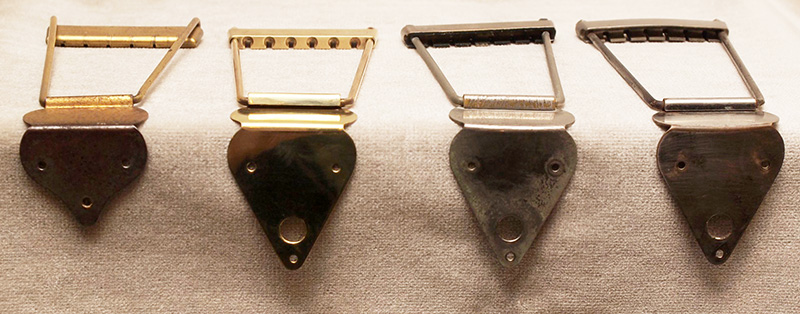
Close-up #42: Trapeze tailpiece evolution 1931–1956
Over the years, Epiphone used a variety of tailpieces on their guitars. Within the three major designs types – Trapeze, Compensating and Frequensator – there were variations in details which were typical for certain time periods, and therefore are helpful for dating parts and instruments.Let's start with the trapeze type tailpieces which were used on all early Masterbilt models until 1935, and afterwards on all lower-end models until 1956 when the original Epiphone company ceased production.
This overview was compiled with the invaluable help of Epiphone aficionado Anthony Hendrix who provided many insights and photos – a big thank you, Tony!
General remarks:
- Plating: Trapeze tailpieces were available in a nickel-plated and in a gold-plated version (until 1937), the latter for high-end instruments.
- Tenor/plectrum guitars: Trapeze tailpieces for 4-string guitars used a narrower string retainer bar, otherwise identical.
- Dating caveat: Tailpieces tend to wear out and break, so they
often get replaced during the liefetime of an instrument. Therefore
it is common to see later replacement units on earlier instruments.
But we also see guitars retrofitted with earlier vintage tailpieces
... So it is often difficult to determine if a tailpiece is original
to an instrument.
Anyway, the time periods when each tailpiece type was typically used are somewhat approximate.
Type 1: Wrap-over bar, short bracket (1931–32)
The trapeze tailpiece seen on the earliest Masterbilt models is quite
different from later types: The string retainer bar is hooked onto the
trapeze (without bolts), with the strings inserted from the front and
wrapped over the bar. The tailpiece is screwed to the rim with a
rather short, curved bracket which does not reach the endpin.
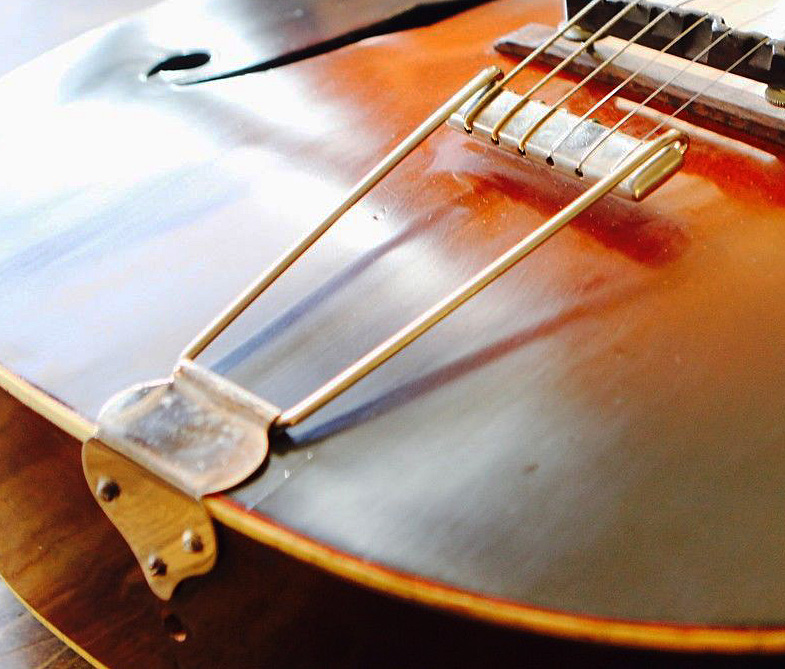
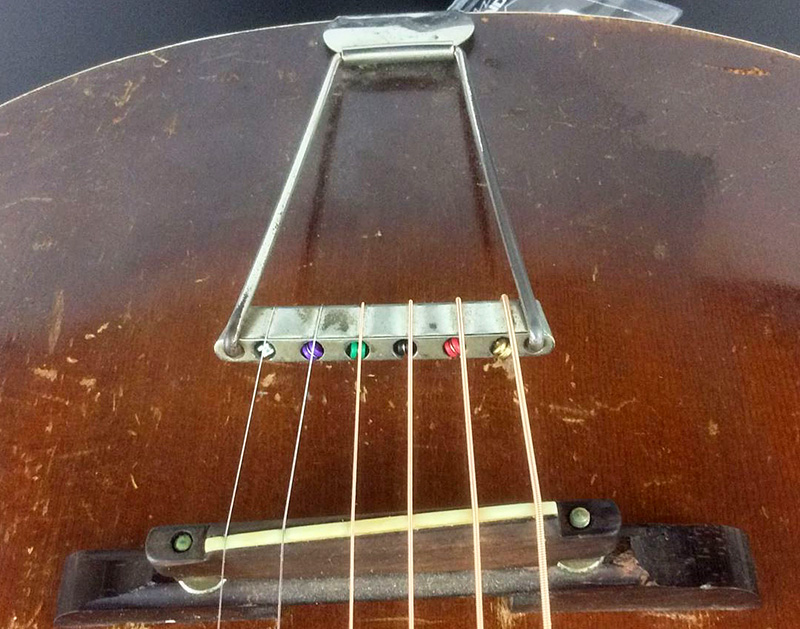
Note that this “Type 1” tailpiece was similar (but not identical) to
the model used by Gibson on their early L models including the L-5 –
some with stamp “Patented July 19, 1910”. See this
great website on the Pre-War Gibson L5.
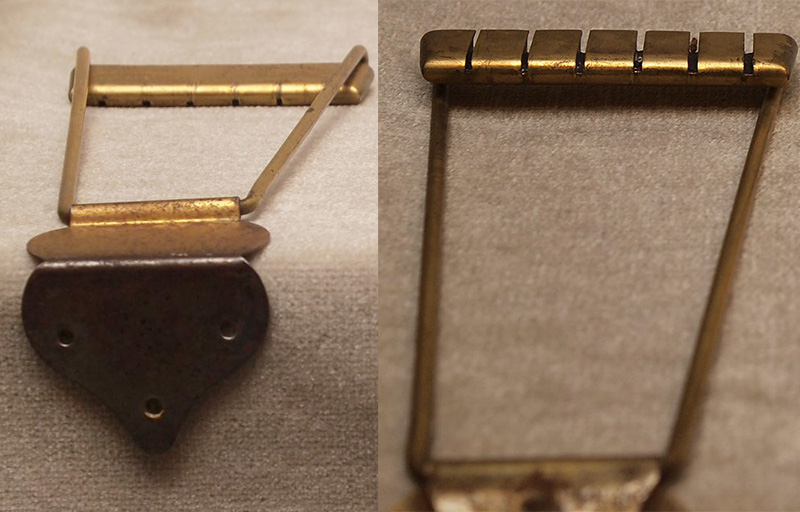
Type 2: Flat bar with holes (1933–35)
By 1933 a new trapeze tailpiece “Type 2” was introduced, with several changes to the previous Type 1: The string retainer bar is now bolted to the trapeze, with the strings being inserted from the rear – a construction that became pretty much standard in the industry. The bar is a flat piece of metal with a square-cut front edge, and slots for each strings with individual recess holes for the ball-ends.
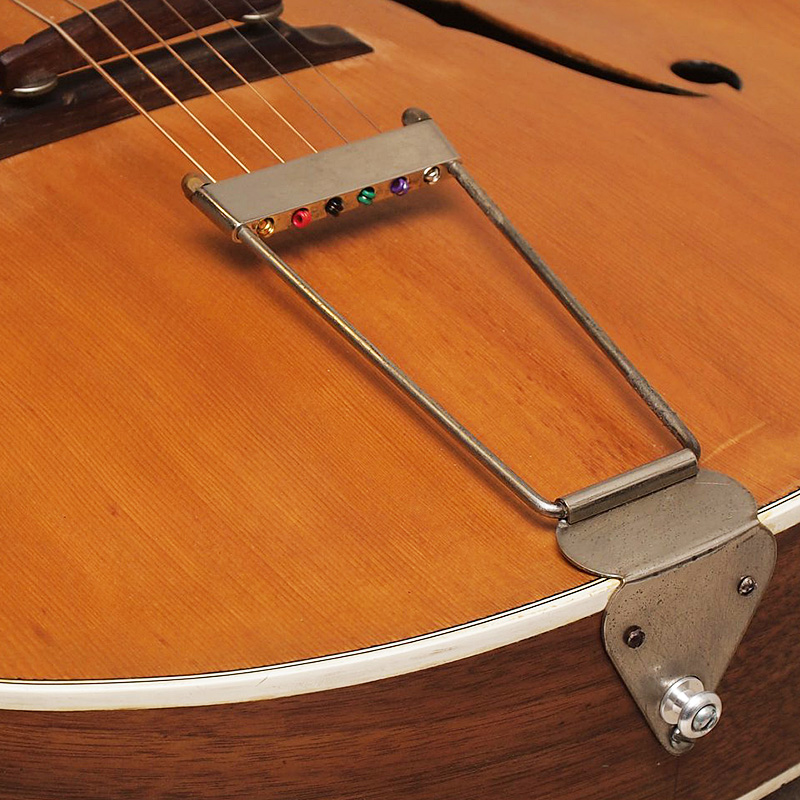
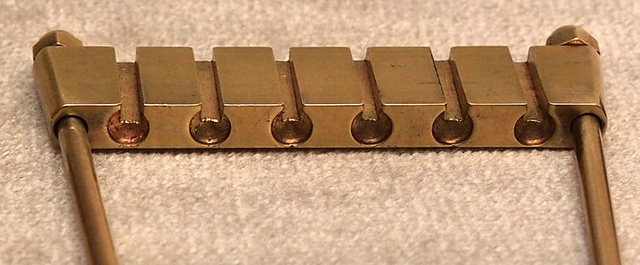
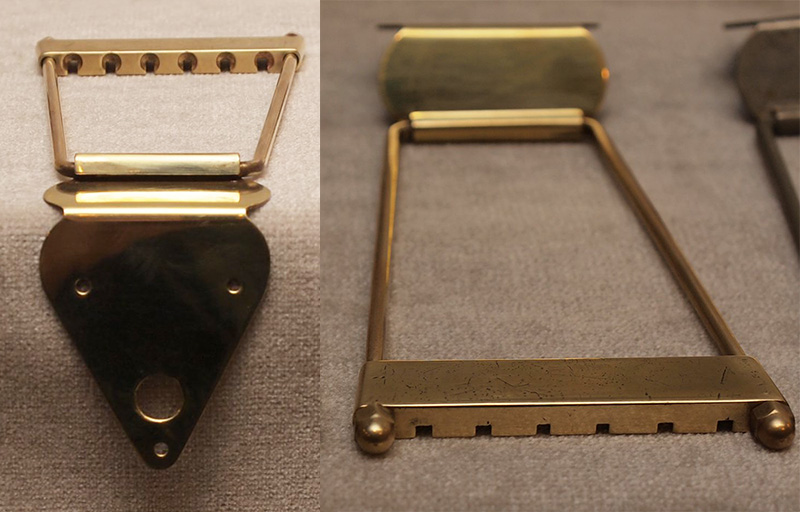
Furthermore, the mounting bracket significantly changed – to a larger,
triangular shape, with a hole for the endpin – a design detail only
used by Epiphone in this exact shape. Note that this new bracket
required the location of the endpin moved towards the top by about ¼"
(compared with the Type 1 tailpiece on early Masterbilt guitars). This
new bracket type stayed in use until 1956 – while the string retainer
bar was subject to various design changes described below.
Type 3: Radiused bar with holes (1934–1935)
Around late 1934, tailpieces with a radiused string retainer bar
start to show up – aligning the strings with the radius of the
fretboard and bridge saddle. The bar on this “Type 3“ tailpiece still
had a solid, square-cut profile with individual recess holes for the
string ball-ends.
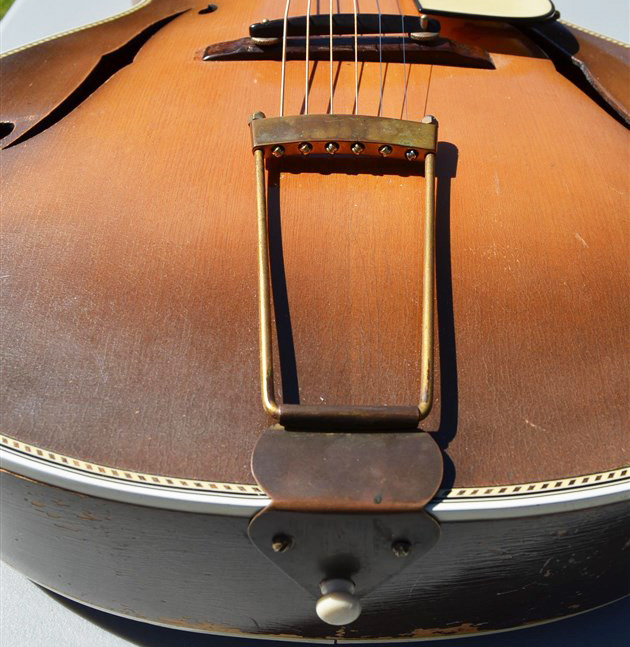
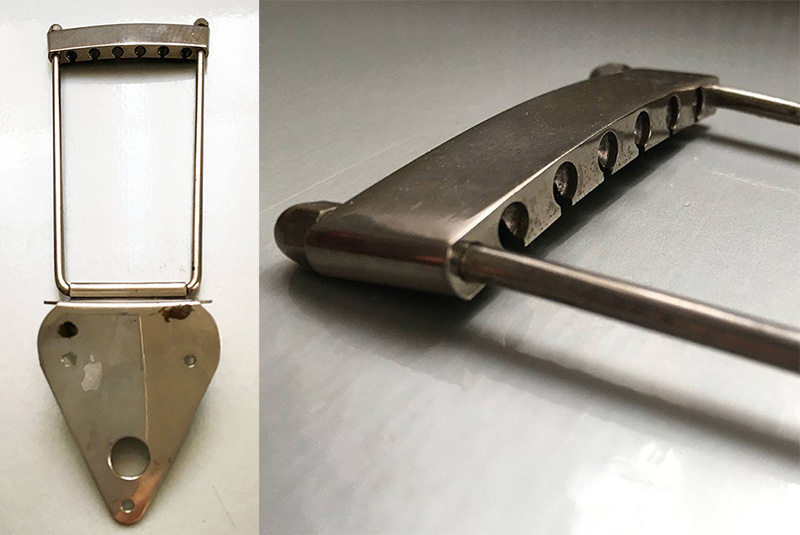
Type 4: Flat bar with slot (1935)
The next change happened in 1935 when the individual recess holes for
the string balls were replaced by a single slot, giving the bar a more
“hollow” appearance. At the same time, the bar profile became rounded
at the front edge. Interestingly, these “Type 4” units were again flat
(no radius) like Type 2 – possibly the reason why it was only
short-lived.
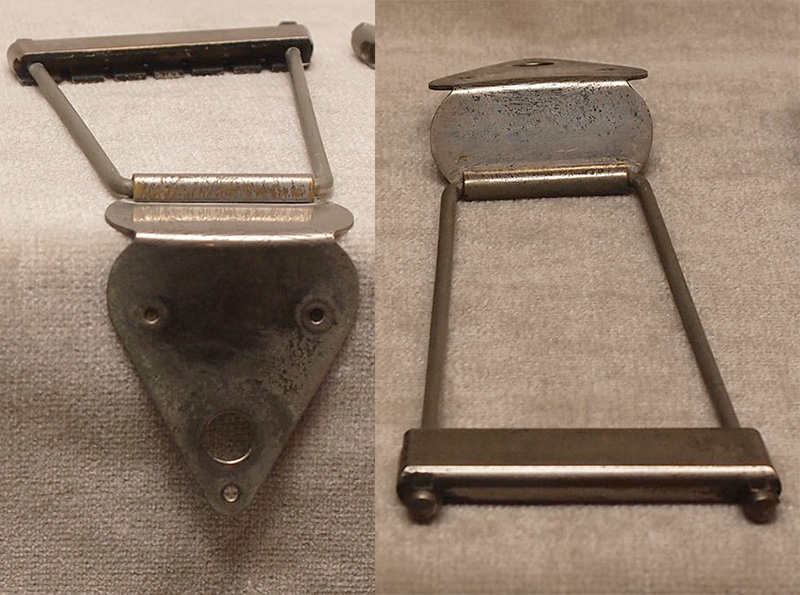
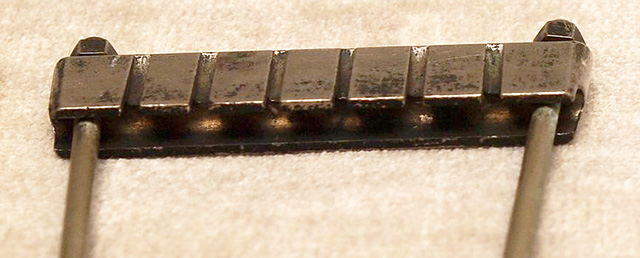
The image below shows the string retainer bars of (from left to right)
Types 1, 2 and 4 – on the latter note the rounded front edge and
single slot visible from the side.
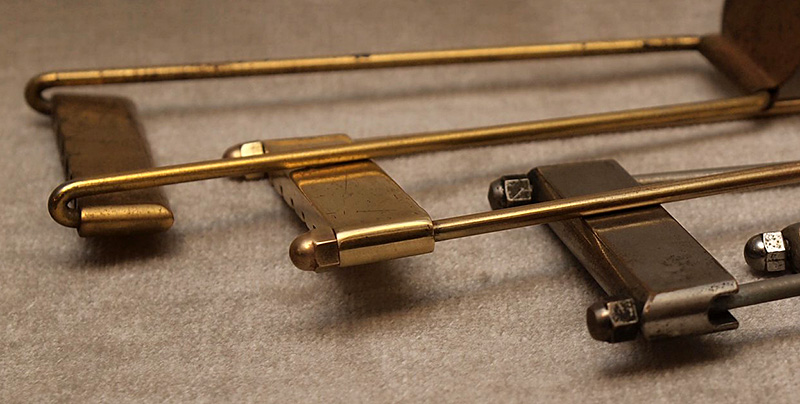
“Type 5” was basically an improved version of Type 4 – showing the
same single slot design with rounded front edge, but now with a
radiused bar shape (like Type 3).
This trapeze tailpiece is the most commonly seen variant: Epiphone
used it from 1935 until 1956 – except during and immediately after WW2
when Type 7 was in use (see below).
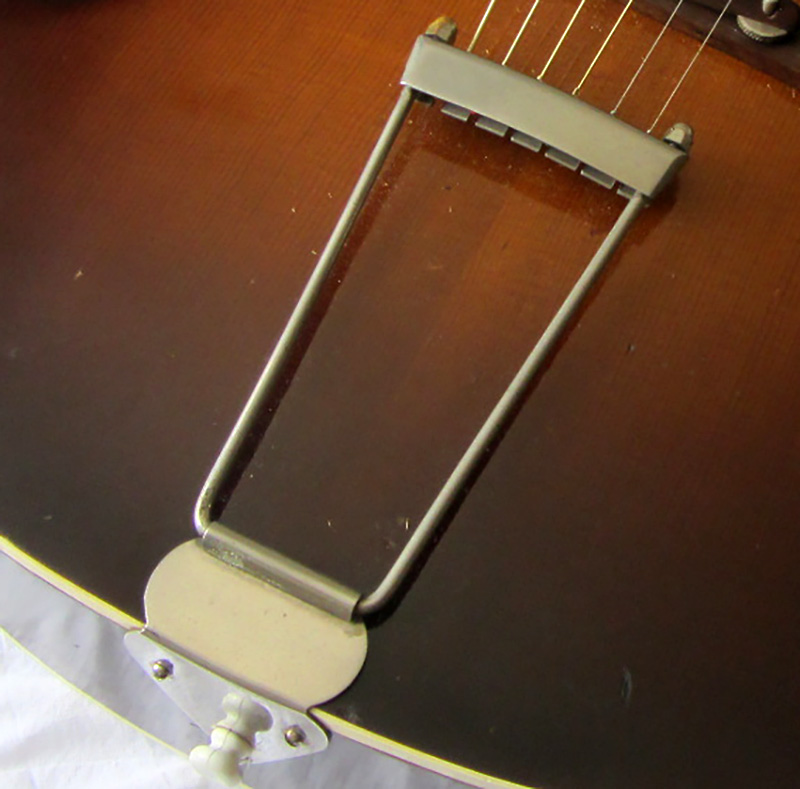
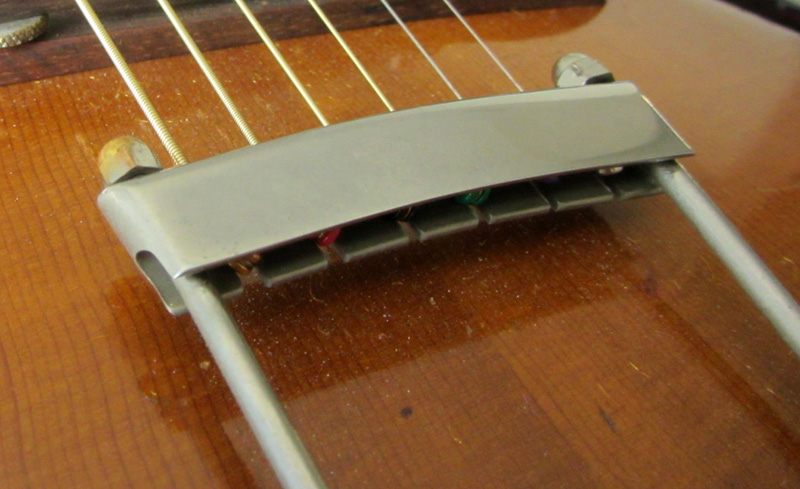
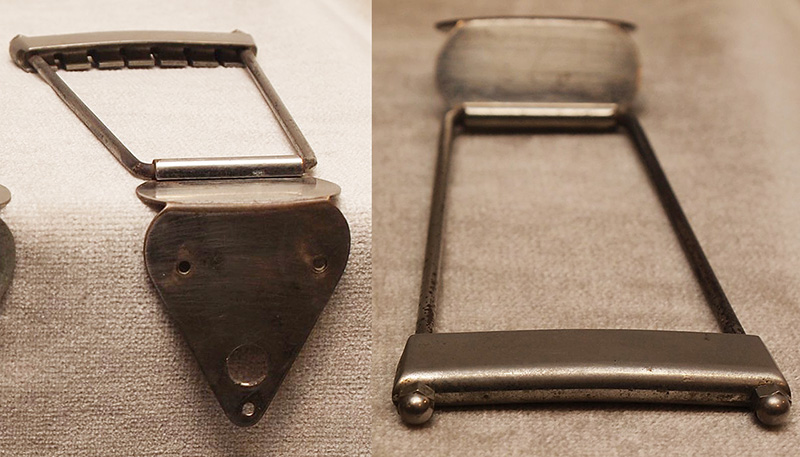
The early Model C Spanish and Coronet Spanish electric guitars – with small 13" body – featured a tailpiece with slightly shorter trapeze part.
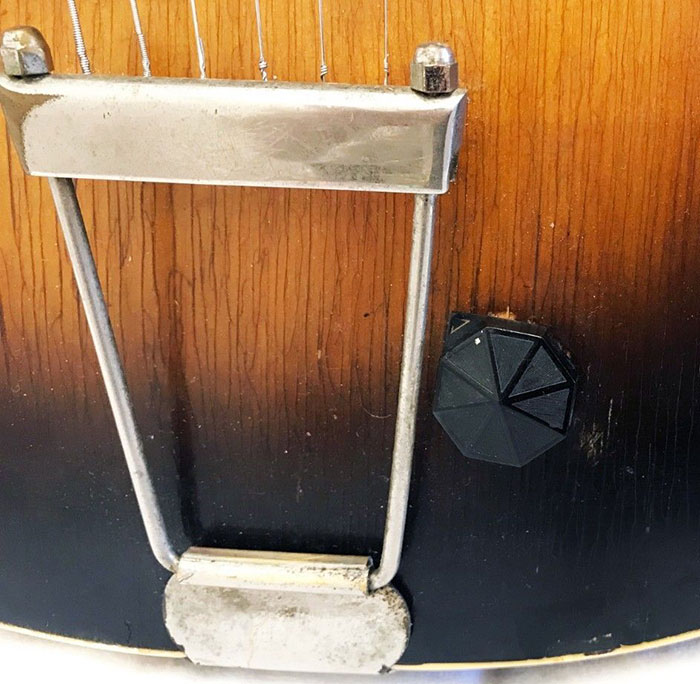
Type 6: Stamped “EPIPHONE” (1941–42, 1947–48)
Some time around 1941, a new trapeze tailpiece variant was introduced which had “EPIPHONE” stamped on the bar.
This “Type 6” tailpiece first shows up on electric Spanish (hollow body) guitars exclusively. When WW2 prompted Epiphone to discontinue electric instruments in 1942, Type 6 tailpieces were briefly used on Zenith and Olympic models – before by 1943 all lower archtops switched to the wartime Type 7 tailpiece (see below). After the war, Epiphone used up spare Type 6 units on some Blackstone examples in 1947-48.
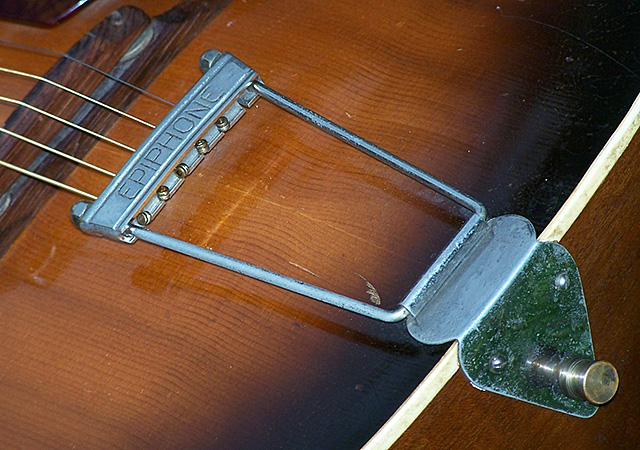
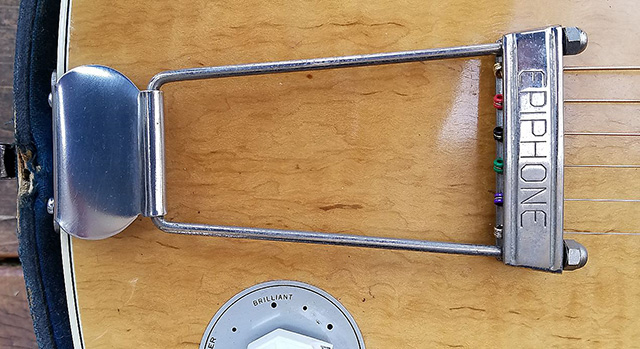
Type 7: Rosewood bar (1943–47)
“Type 7” came into use due to wartime material restrictions: In order to save metal for the war effort, the string retainer bar was instead made of rosewood, with drilled holes for each string. This tailpiece was introduced in 1943 and kept showing up until 1947, on acoustic archtop models with 16" and 15" wide body.
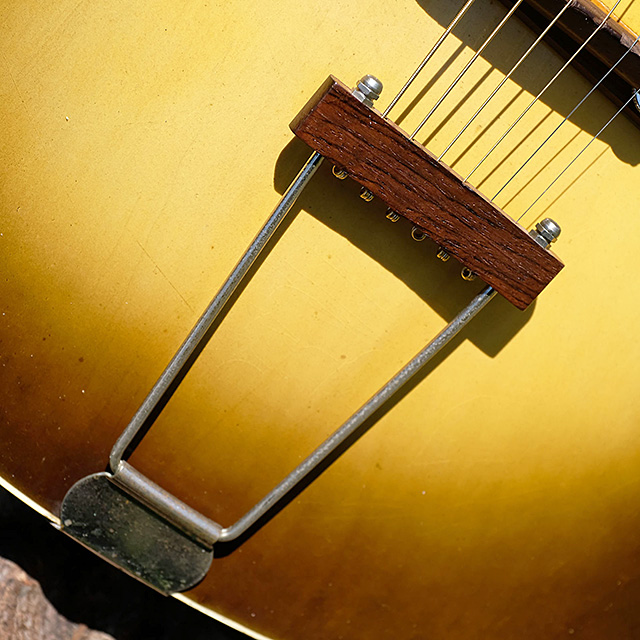
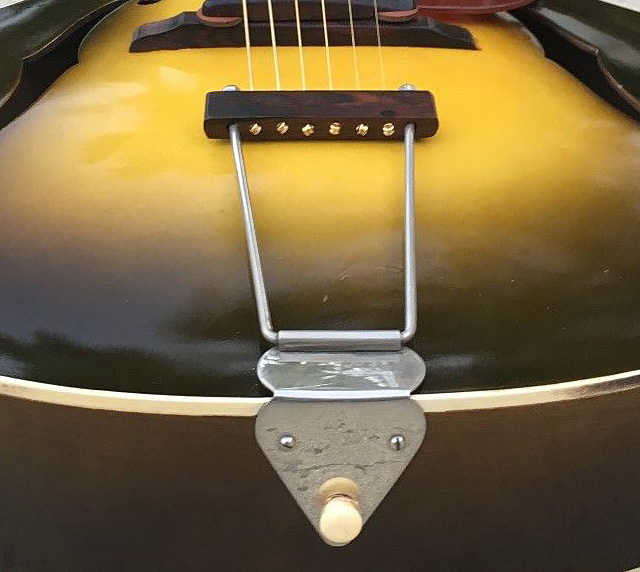
Type 8: Radiused bar, short bracket (1955–56)
In 1955, Epiphone introduced the Harry Volpe electric hollowbody guitar, the only artist model of the original New York company. The "Type 8" tailpiece used exclusively on this small-body electric model is similar to the standard Type 5 unit, but with a shorter bracket – i.e. not surrounding the endpin (similar to Type 1 in this respect).
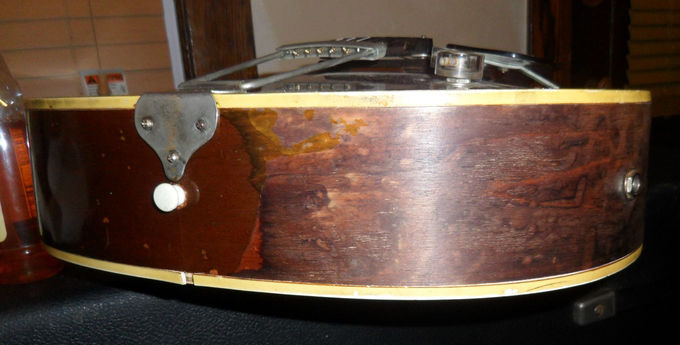
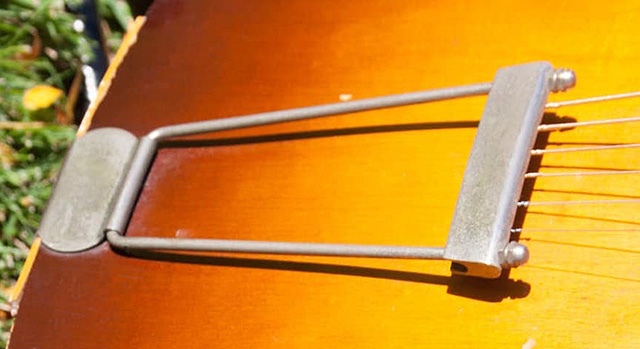
Type 9: Short trapeze (for flattop guitars 1939-40)
For a brief period in 1939–40, Epiphone’s flat top guitars were equipped with a special “string-through" bridge and tailpiece instead of the more common pin bridge. These “Type 9” tailpiece units have a shorter trapeze and thinner bar than the tailpieces for archtop guitars – see also image in the 1939 catalog below.
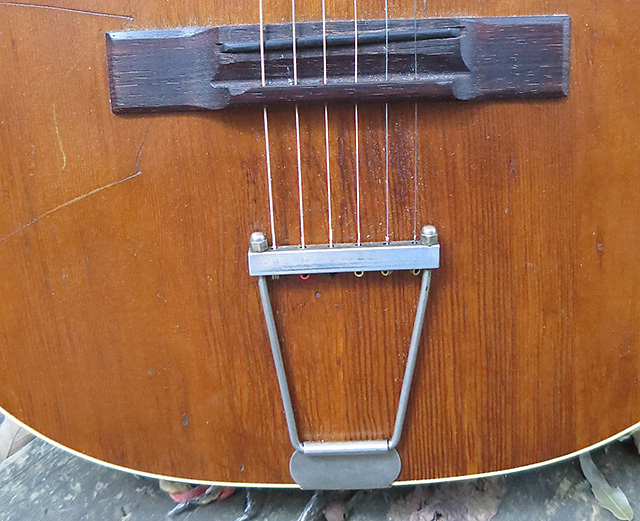
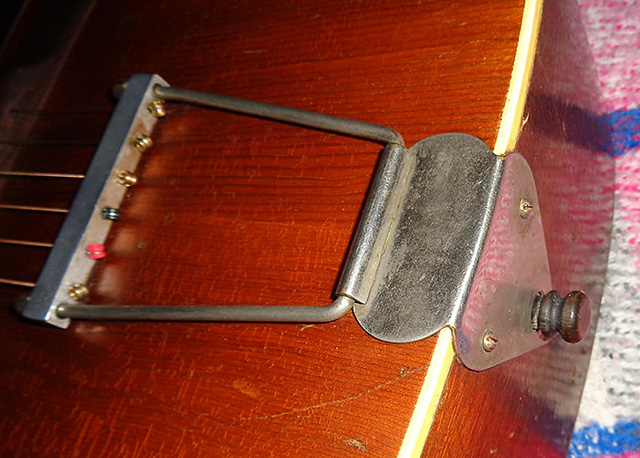
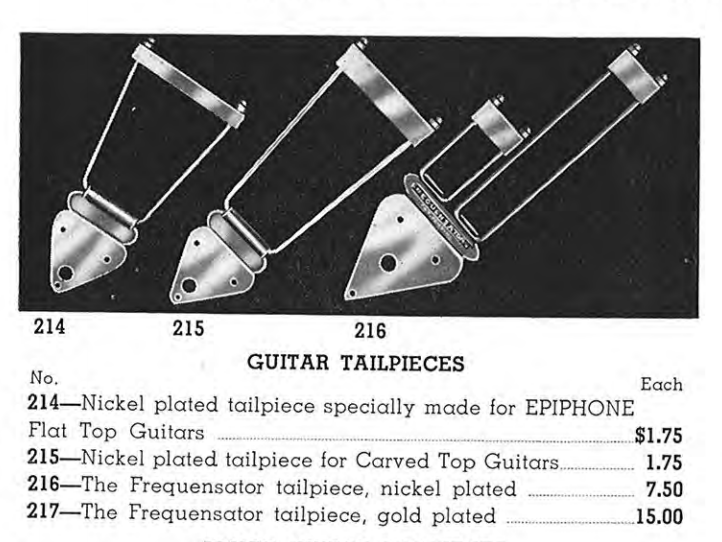
Summary
The table below summarizes the trapeze tailpiece evolution:
| Years |
Models |
Type |
Bar | Recess |
Special | Bracket |
| 1931–32 | Archtop |
1 | flat | holes | wrap-around | short |
| 1933–35 | Archtop |
2 | flat | holes | square edge |
long |
| 1934–35 | Archtop |
3 | radiused | holes | square edge |
long |
| 1935 | Archtop |
4 | flat | slot | round edge |
long |
| 1935–56 | Archtop, Electric |
5 | radiused | slot | round edge |
long |
| 1941–42 1942 1947–48 |
Electric Zenith, Olympic Blackstone |
6 |
radiused | slot | stamped "EPIPHONE" |
long |
| 1943–47 | Archtop |
7 | flat | holes | rosewood | long |
| 1955–56 | Volpe | 8 | radiused | slot | round edge | short |
| 1939–41 | Flattop |
9 | flat | none | short, thin | long |
Note: This overview is subject to updates whenever
new evidence surfaces.
(Oct 31, 2018 – with later additions)